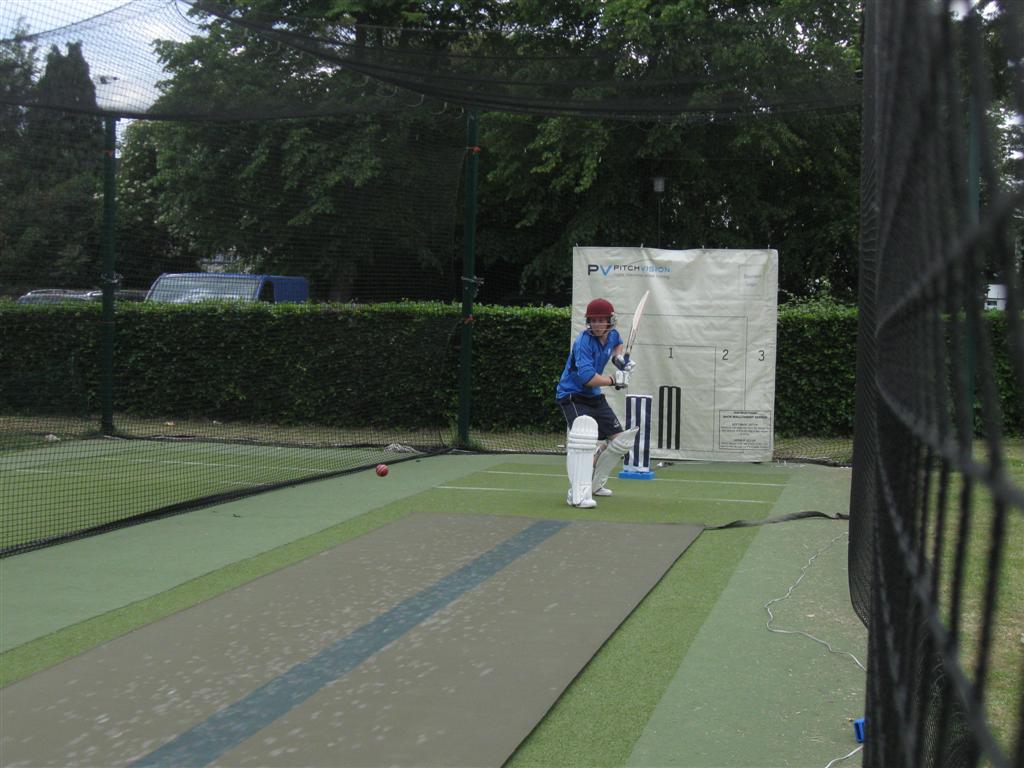|
 During his career, Shane Warne was one of the loudest opponents to coaches; famously saying the only use for a coach was to drive the team to the ground. Yet even he turned to a mentor in Terry Jenner when times were tough or he needed some external help. During his career, Shane Warne was one of the loudest opponents to coaches; famously saying the only use for a coach was to drive the team to the ground. Yet even he turned to a mentor in Terry Jenner when times were tough or he needed some external help.
Coaching is critical; as long as it comes from the best in a way you can understand. That's why we set up PitchVision Academy coaching courses; to present information used in the first class game in a way that is affordable whatever level you play or coach.
So how does it work, and how can you make the most from it?
What is an online cricket coaching course?
A course is a bit like a constantly updated, interactive coaching book.
I remember when I was younger being desperate for coaching advice (we had no formal coaching at our club). Every Saturday morning I would take the 10 minute walk into the local shopping centre and pour over the coaching books in the book shop. Occasionally I would be impressed (and flush) enough to buy one. I treasured every book (and I still have most of them) but I felt they still couldn't give me everything I wanted.
The focus was only on technical information and glossed over tactics, fitness and the mental side of the game. There was no explanation, little context and the pictures never quite illustrated what I wanted.
That's why, when I was setting up the course on PitchVision Academy I made sure the authors all the latest methods presented in several ways depending on your learning style: words, sounds, video or worksheets. I also made sure each course contains an exclusive forum for members of the course to discuss areas in further detail with the coach.
Because of my experiences as a boy, I'm aiming to provide coaching information so you don't feel the same frustration with trying to learn the skills of the game be they fitness, mental, technical or tactical.
How to use online cricket coaching
Each course is unique in its presentation but they all have common factors:
- Complete guides to the topic.
- Are authored by recognised experts in their subject.
- Is totally ad-free. You have paid for exactly what you get.
- Can be used by players or coaches.
- Presented in several different ways to match your needs (audio, visual, written)
Using a course is a step-by-step process. Once you have enrolled you have unlimited access to all the content, so let's look at an example of how simple it can be.
For example, you may be having trouble playing fast bowling off the back foot. It's a common fault to back away. Coaches see it all the time yet many don't know how to deal with it. It can ruin a player's confidence and stop them scoring runs against any kind of bowler.
You decide to prevent this and rebuild your confidence by improving your defence yourself and want some drills. A quick glance at the courses page gives you Gary Palmer's "Build confidence with solid defensive techniques and tactics". Perfect.
As you have a specific problem you make a mental note to go through the rest of the course later and head straight for the section to stop you backing away (In Chapter 2). Here is a small sample of that video:
The actual video is much longer and includes the progressions from the original drill. You also head back to chapter 1 just to get a feel for how the back foot defence should look when done correctly.
Other courses may contain worksheets or quizzes to help you learn the information, but in this case the technique is about getting the feel right rather than the concept, so it's time to practice.
From the PC to the nets

Armed with your new drills you head to the nets with some mates. Instead of just bowling and batting mindlessly you now have a specific drill to work on and turn your weakness into strength.
After a few minutes of throwdowns you go back to regular practice. Now you have the right 'feel' for where your feet and head are you are more confident than before. You can, with a few more progressions, get your technique perfect, even against the really quick bowlers.
Any questions?
Sometimes it won't be that easy. Perhaps your problem is not directly answered in the course (although most are) or you feel something needs to be clearer.
That's why we have build forums into every course that can only be accessed by course members. It's a feature I am particularly proud of: The ability to interact with the author of the course and other players/coaches. It's one thing I wished I could do when I was learning the game and love doing to this day.
Some people are happy to learn by themselves, but for those who want the interaction, chance to learn through thinking 'out loud' and personalisation through questions the forums are perfect.
Explore the options
These courses come from our passion to pass on knowledge in a level of detail that has never been done before in cricket. If there is another version of me out there looking for the same things I was looking for, these courses provide the answers.
So I invite you to take a look at the course contents and see if there is anything you can use to make your game (or the games of those you coach) better.
If there is, then it's time to enrol; I'm confident you won't find anything better or more detailed online.
Discuss this article with other subscribers
|









